Doctor’s Orders
SEPTEMBER 2023















SEPTEMBER 2023














Glance at a woman’s calendar, and you will likely find only a few days where nothing is on the schedule. For weeks and months ahead, it will be filled with her family’s activities, appointments, and a list of reminders. There’s a lot to do—and remember—for herself, her family, her job, and keeping a household running. Somewhere between PTA meetings, getting the dog groomed, grocery shopping, managing bids for home repairs, helping the kids with homework, and making dinner, there is little time for much else. When schedules become overbooked, a woman’s annual medical appointments are often pushed back, cancelled, or even forgotten, which may place her health at risk.
“Simply put, women are busy,” says Dr. John Bertrand with Walnut Hill OB/GYN Associates. “It’s not uncommon for our patients to have kids ranging in age from babies to teenagers, so scheduling can be hard. All moms are working moms, whether they work outside of the home or not. And today, with remote work, many women are working at home while taking care of their children. As physicians, we recognize it’s not easy to take time out for medical appointments, so we try to make it a priority to cover everything we can during their office visits with us.”
“A THOROUGH WELL-WOMAN EXAM SHOULD INCLUDE DISCUSSIONS ABOUT SLEEP QUALITY, NUTRITION, MENTAL HEALTH, AND EXERCISING. IT CAN BE DIFFICULT TO TAKE TIME FOR ALL THIS, BUT IT’S NECESSARY FOR OPTIMAL HEALTH.”JOHN D. BERTRAND, M.D. WALNUT HILL OB/GYN ASSOCIATES
WOMEN’S HEALTH
BY JENNIFER SANDER HAYESMany OB/GYNs have placed an even heavier emphasis on discussing the importance of recommended health screenings while they have their patients’ attention during their appointments. Many types of diseases that commonly affect women, from breast or cervical cancer to osteoporosis, have a greater chance of successful treatment when caught early. For the ultimate in convenience, Walnut Hill OB/GYN Associates now offers screening mammography services in the office. This allows patients the ability to complete their annual wellwoman exam and screening mammograms all in one visit. “We have already found cancers in patients who told us that if they couldn’t have coordinated both appointments at once, they likely wouldn’t have had time for both,” Dr. Bertrand says. “This has emphasized to us that we are providing an invaluable service.”
A well-woman exam should cover every type of appropriate screening based on age and family history. Colonoscopy screening now begins age 45, mammography at 40, and bone mineral density screenings are recommended when women are in or are approaching menopause. Annual skin cancer screenings, mental health checks, and discussions about healthy nutrition and exercise should also take place during annual exams as well.
Dr. Carrie Carter, a physician with the CC:MD Concierge medical team, finds that women often hesitate or fail to contact their physician when they have concerning symptoms. When she asks them why they deferred reaching out, she often hears, “I didn’t want to bother you” or “I’ve been really busy and haven’t had time.” Dr. Carter thinks this is emblematic of the generous spirit of many women who prioritize everyone and everything above themselves. “I like to stress how important it is to take care of yourself so that you can take care of everyone you love,” she says. “Finding time to take care of yourself is a challenge for busy women. We advise our patients to revise their ‘should-do’ lists and keep only what adds joy, value, and quality to their life. This includes good medical care.”
Dr. Carol Croft, also with CC:MD, says some of her patients have mentioned that they put off going to medical appointments or getting vital screenings because they felt their concerns were not heard or dismissed in the past. They may have left an encounter feeling like their issues were minimized. What was frightening or concerning to them at the time was blown off. “They don’t want to feel like they are wasting their time or the doctor’s time, so they just don’t go,” Dr. Croft says. “It’s so important to find a doctor who will listen to you. Doing so will allow you to prioritize yourself and your health, and being healthy ultimately will save you time and energy. In addition, you will have peace of mind knowing that you and your physician are aligned and that you are getting the best care you can.”
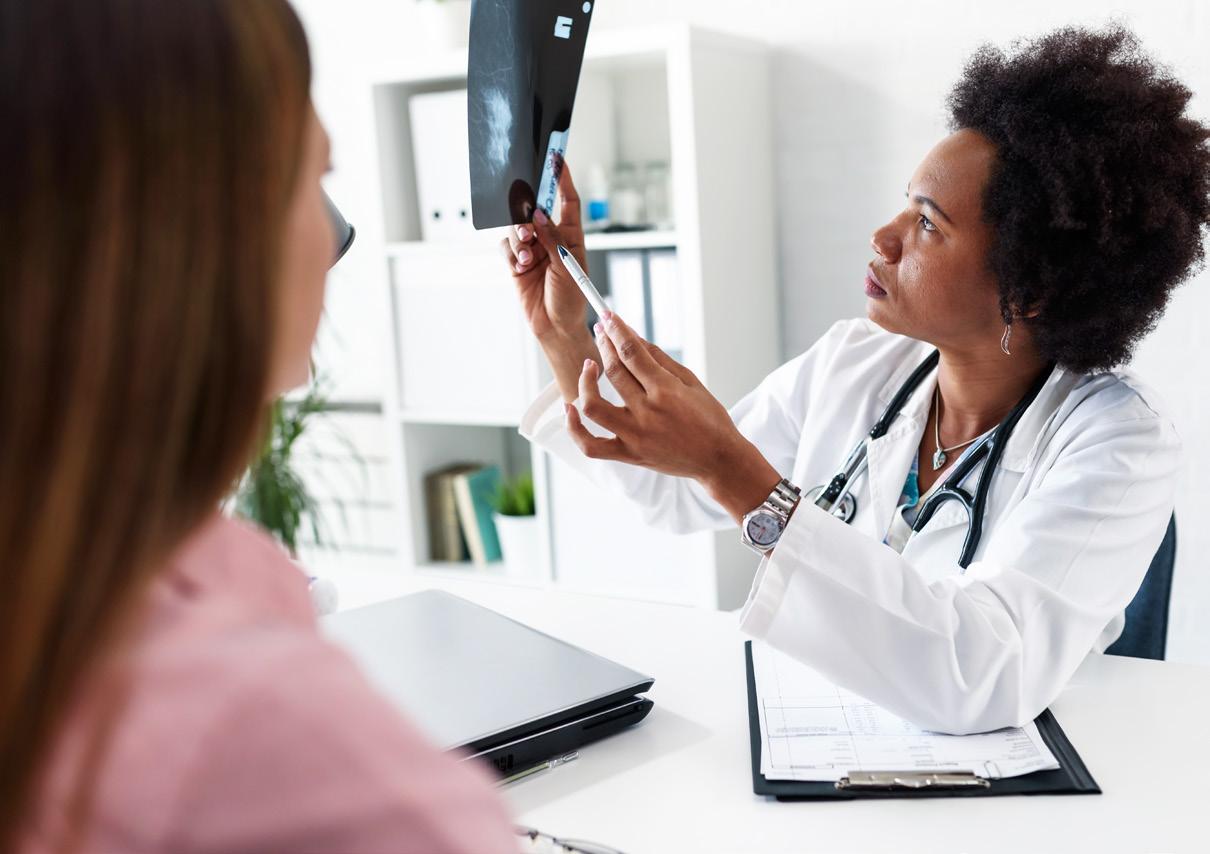
Report concerning symptoms to your doctor. Early cancer detection can save your life.
When people think of “women and cancer,” inevitably, breast cancer comes to mind. And for good reason, as it remains the most common type of cancer in women. However, skin cancer, colorectal cancer, and lung cancer follow closely behind in statistics and often have a later-stage diagnosis because the symptoms are less noticeable and there is less emphasis on screening. Some cancers, such as ovarian cancer, have no definitive screening available—another reason for a latestage diagnosis.
Anju Nair, M.D., a board-certified medical oncologist and hematologist with Texas Oncology, says breast cancer is often top of mind for women because it receives more media attention. She finds that many of her female patients with other types of cancer are often surprised by their diagnosis, either because they don’t have a family history of it, or they haven’t heard as much about it. Therefore, they weren’t as vigilant about getting screened or asking their doctors about their unusual symptoms.
“We have the benefit of screening for some cancers, particularly those that affect women, such as cervical cancer and breast cancer,” Dr. Nair says. “The benefit of staying on top of cancer screening is that if there is an early finding, not only can we diagnose it early, but we can also treat it early. For instance, colon cancer may start off as a benign polyp or growth that isn’t malignant yet. With a colonoscopy, you can catch it long before it becomes malignant. Often, a finding of pre-cancer can trigger a response from a primary doctor who will then recommend genetic testing or other cancer screens that can also be beneficial.”




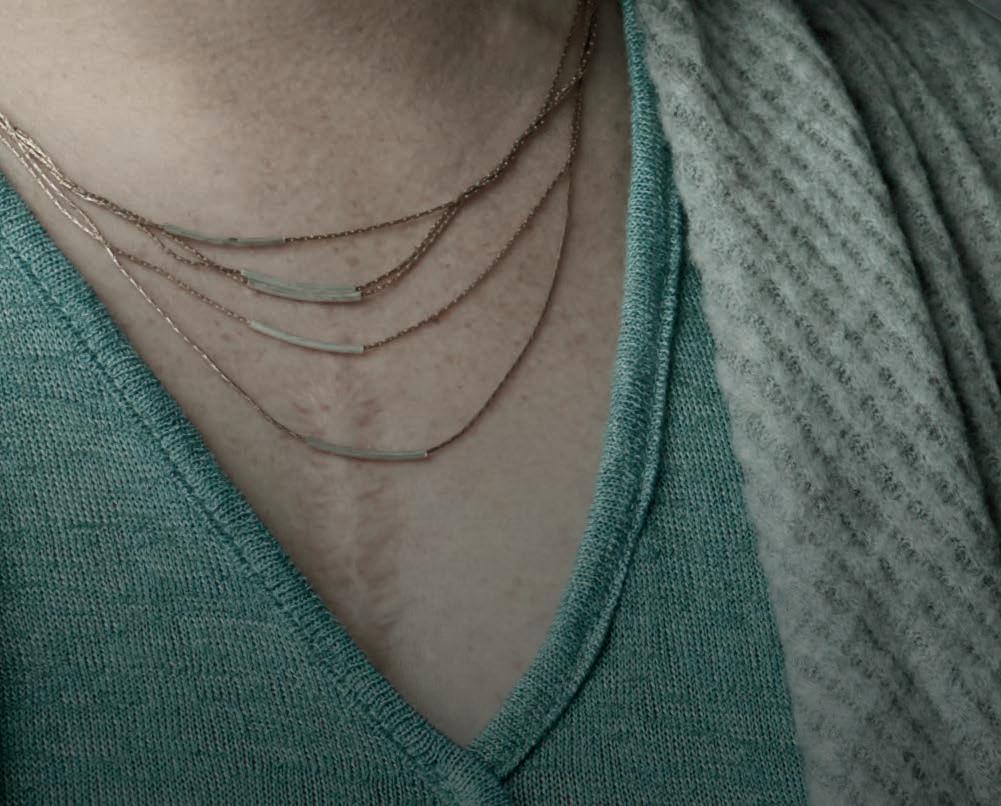














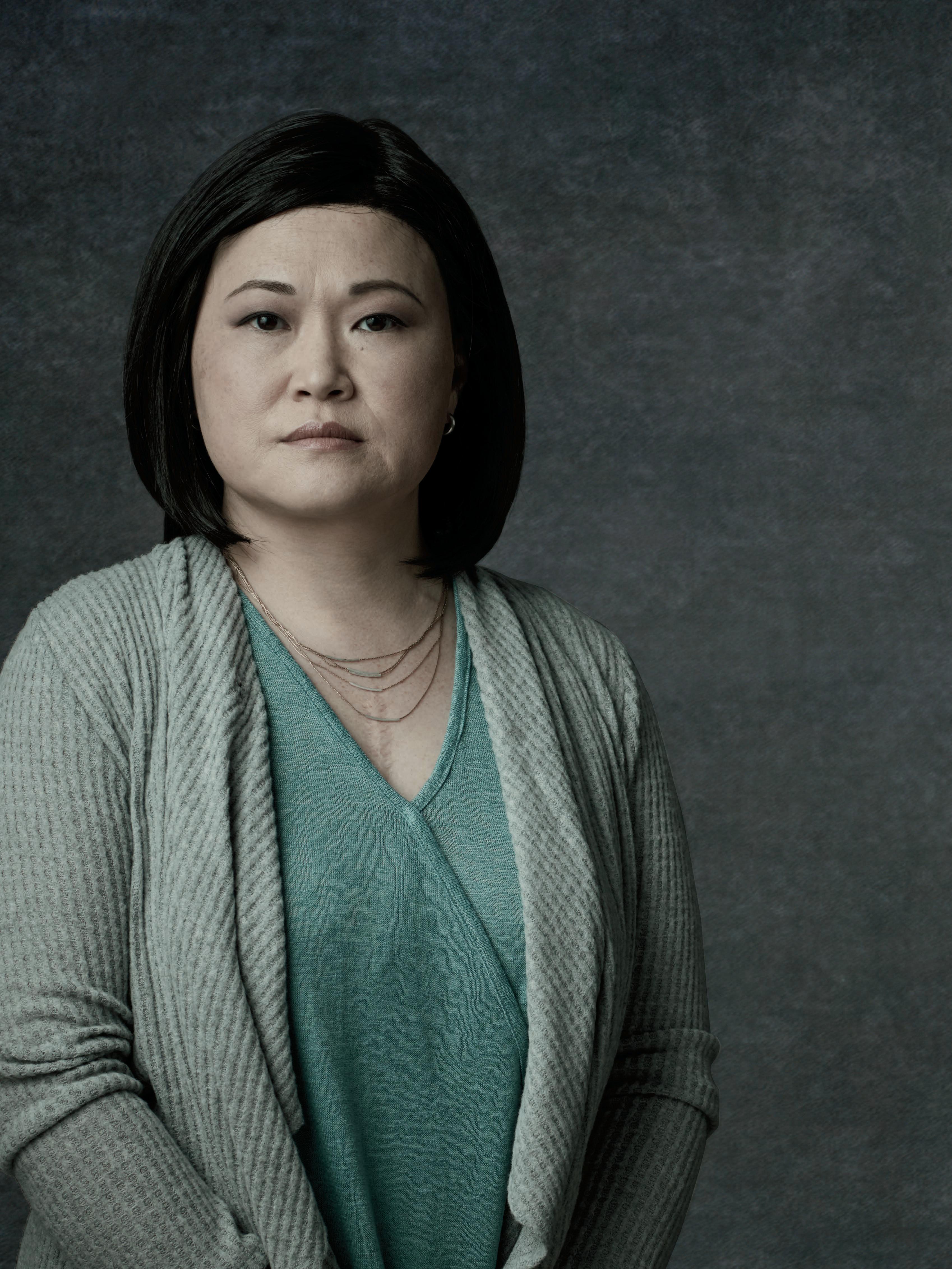
The American Cancer Society recommends the following cancer screening guidelines for women:
BREAST CANCER
• Women ages 40 to 44 should have the choice to start yearly breast cancer screening with a mammogram (X-ray of the breast) if they wish to do so.
• Women ages 45 to 54 should get a mammogram every year.
• Women 55 and older can switch to a mammogram every two years or can continue yearly screening.
• Women at high risk for breast cancer—because of their family history, a genetic mutation, or other risk factors—should be screened with MRI along with a mammogram.
COLORECTAL CANCER
• Start regular screening at age 45.
• Have a colonoscopy every 10 years, or a CT colonography (virtual colonoscopy) every five years, or a flexible sigmoidoscopy every five years.
• Those with high risk of colorectal cancer based on family and/or personal history or other factors may need to start screening before age 45, be screened more often, or get specific tests.
LUNG CANCER
• If you smoke now—or did smoke— and are between age 50 and 80 and in fairly good health, you may benefit from screening for lung cancer with a yearly low-dose CT scan.
CERVICAL CANCER
• Start screenings (Pap) at age 25.
• Women between age 25 and 65 should get a primary HPV test every five years or get a co-test (an HPV test with a Pap test) every five years or a Pap test every three years.
• Women over age 65 who have had regular cervical cancer testing in
Report these symptoms to your doctor who will determine if testing or screenings are needed to rule out cancers that commonly affect women.
Blood in stool or unusual vaginal bleeding
Unexplained weight loss or changes in appetite
Unexplained or ongoing pain
Changes in bowel habits
Changes in breasts
Source: Anju Nair, M.D., Texas Oncology
the past 10 years with normal (or negative) results should not be tested for cervical cancer. Those with a history of serious cervical precancer should continue to be tested for at least 25 years after that diagnosis, even if the testing goes past age 65.
• Be aware of all moles and spots on your skin and report any changes to a healthcare provider right away. Ask about having a skin exam done during your regular health check-ups.
• At this time, there are no recommended cancer screening tests for ovarian cancer for women who are not at high risk of developing the disease. See a healthcare provider right away if you have concerning symptoms that last for more than a few weeks that could indicate ovarian cancer.
Dr. Nair says early detection of all types of cancer is a matter of relaying your concerning symptoms to your primary doctor and following up closely. Seeking cancer treatment at a comprehensive cancer center, such as Texas Oncology, means you will have access to different types of doctors who can treat the cancer with a multidisciplinary approach, from nutrition and emotional support to the latest, most innovative treatment modalities.
“The likelihood of successful treatment is so much better now—the key is when the cancer is picked up,” Dr. Nair says. “If it’s picked up in a timely manner, there could even be a possibility of cure. That wasn’t always the case. We are starting to see more and more women survive breast cancer, as well as other types of cancer. Their prognosis is improving, and their quality of life during treatment is improving as well. The goal is to finish up the course of treatment so they can move forward with their lives.”
Dr. Nair adds that clinical trials and new treatments, such as immunotherapy, are proving to be effective for many types of cancer. “Immunotherapy is a possible alternative to chemotherapy for many types of cancer,” she says. “Immunotherapy helps someone’s own immune system to kill cancer. We are able to study each person’s cancers in greater detail in order to provide more individualized treatment. If the tumor happens to have a particular protein or genetic mutation, we have the option of using newer drugs that target these findings. Such targeted therapies offer better outcomes with better tolerated side effects.”


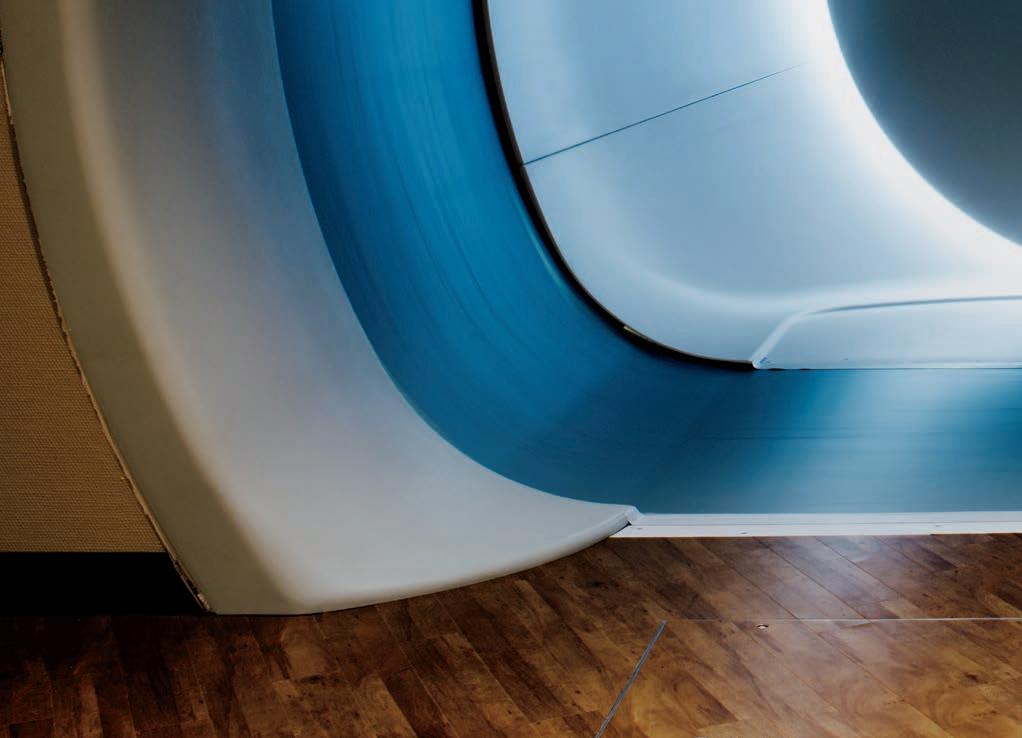
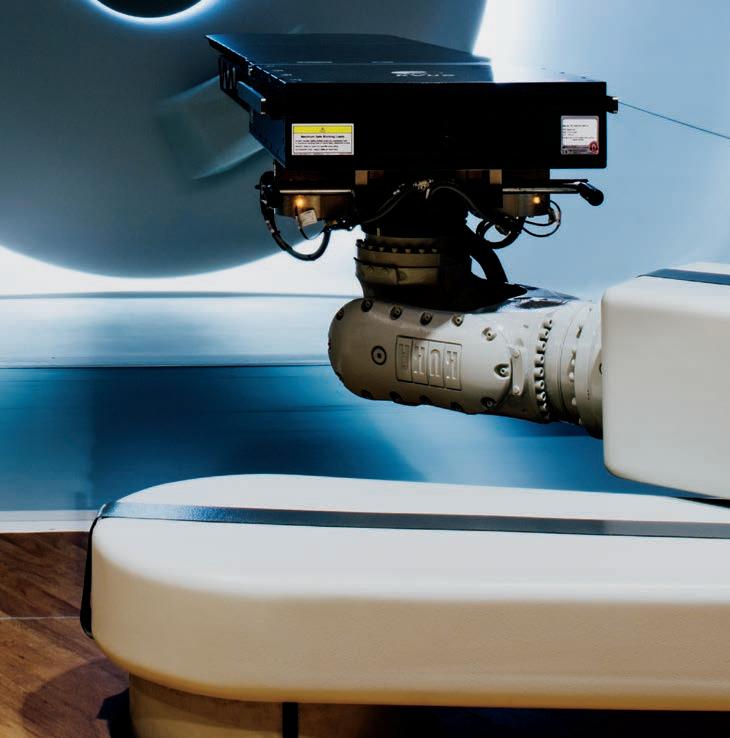


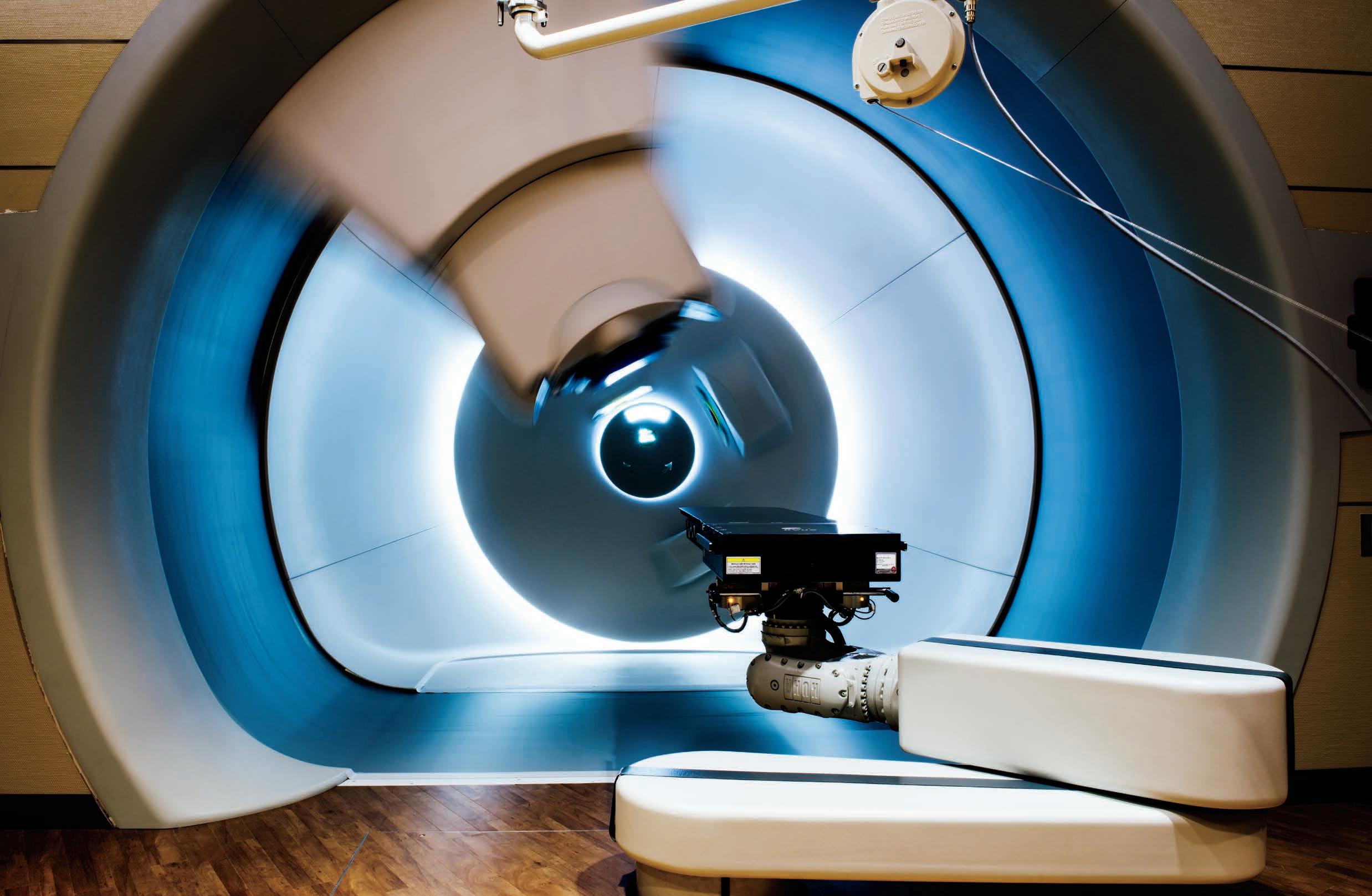
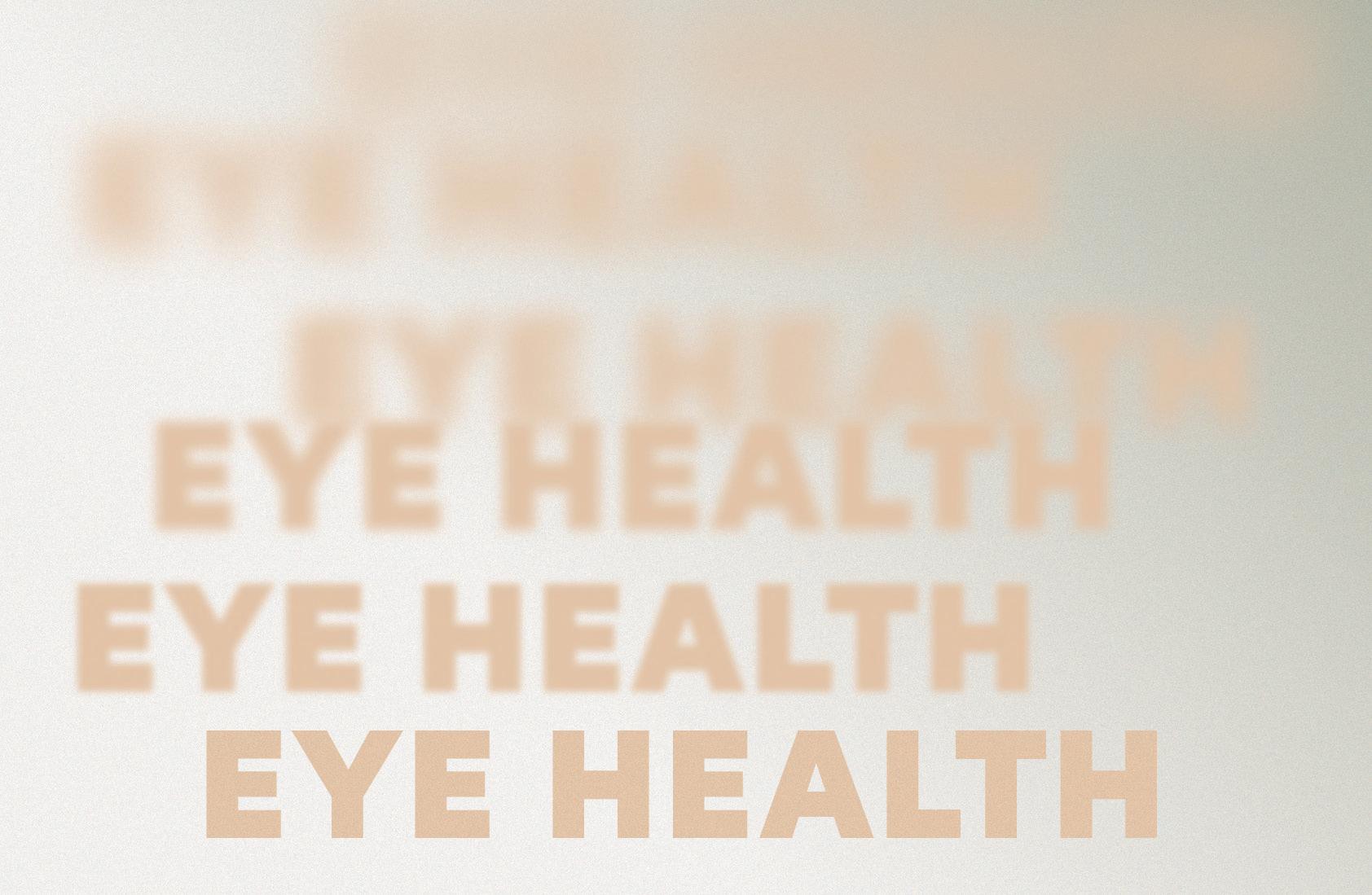
Why women shouldn’t miss their annual eye exams.
Even if you have enjoyed perfect vision throughout your life, once you reach your mid- to late-40’s, you may suddenly find that it becomes difficult to read a restaurant’s menu in dim lighting. Or you may move your cell phone further away from your face to read a text. Changes in vision in older adults, called presbyopia, are common as we age, but these changes also signal that it’s time for an eye exam. There may be subtle changes in your eyes that are more dangerous than experiencing slightly blurred vision.
“I recommend having a yearly, fully dilated eye exam,” says Dr. Roxanne Lee, an ophthalmologist with Kleiman Evangelista. “This provides your ophthalmologist with the opportunity to look from the front to the back of your eyes and check for conditions that can become more prevalent as you age. You may not have any concerning symptoms or be experiencing a change in vision, but we can likely catch the initial stages of glaucoma or cataracts before they cause serious issues. For instance, glaucoma doesn’t have any symptoms until it becomes late stage. If it isn’t treated early, it can cause permanent loss of vision. If we see anything concerning or any changes from your last exam, we can do some further testing.”
“TWO-THIRDS OF ALL BLINDNESS AND VISUAL IMPAIRMENT OCCUR IN WOMEN.”
Regular eye examinations are critical, and women should do the following to maintain the health of their eyes.
Eat healthy foods with plenty of leafy-green vegetables. Know your family history as it relates to eye diseases. Macular degeneration and glaucoma can run in families. Don’t smoke. Get annual dilated eye examinations.
Use safety glasses when performing chores, yardwork, and carpentry. Wear sunglasses to protect your eyes from UV rays which can increase the risk of cataracts and macular degeneration.
Source: Sylvia Hargrave, M.D., The Hargrave Eye Center
Another common issue with aging eyes is macular degeneration, which can also cause loss of vision if it isn’t caught and treated in time. Diabetes, high blood pressure, and excessive sun exposure can also affect vision. One common eye condition that tends to affect women more than men is dry eyes. In fact, Dr. Lee says, it is twice as prevalent in women than men, particularly in women who are in menopause or are post-menopausal. “As women age, they produce fewer tears, and the tears that are produced don’t function as well in moisturizing the eyes as they once did,” she says. “Fortunately, we have a complete spectrum of treatment, beginning with artificial tears, as well as using thermal or pulsed light treatments around the eyes and face, or using anti-inflammatory eye drops to enhance natural tear production. Taking an Omega 3 supplement can also help to optimize natural oil production around the eyes.”
Dr. Sylvia Hargrave, an ophthalmologist with The Hargrave Eye Center, says two-thirds of all blindness and visual impairment actually occur in women. “In general women live longer than men,” she says. “This puts them at higher risk for eye diseases that are associated with age—cataracts, glaucoma, and macular degeneration. Women are also more likely to suffer from autoimmune conditions, which are often associated with ocular side effects.”
The most common inevitable vision change that accompanies age is presbyopia, which is the gradual loss of accommodation in the eyes causing the need for reading glasses. As the lens inside of the eye becomes less flexible with age, the need for reading glasses increases year by year. There is not currently a specific treatment to reverse this change, but there are several surgical options designed to alleviate someone's dependency on glasses after presbyopia occurs. As not every patient is a candidate for every surgical option, Dr. Lee recommends discussing these options with an experienced surgeon to clarify which treatment is recommended. Aside from surgery, prescription eye drops that temporarily improve intermediate vision are available, but this is not a solution for all patients and, like all medications, do have risks of adverse effects.



Effective shortterm therapy?
It’s possible with intensive EMDR sessions.
When Alexandra Lambeth, a licensed professional counselor and owner of Fresh Start Counseling, meets with new female patients, she says that most often, they are in some type of life transition—a divorce, the death of a spouse, becoming an empty-nester, or possibly a big career change. They have tried to navigate these changes alone, but soon realize that to become “unstuck,” they would need the guidance of a professional counselor.
“Not all life transitions are unique to women, but women tend to experience several throughout their lives, especially mothers,” Lambeth says. “At times of loss or change, women often feel as if they have lost their identity. It can be a huge, depressing hole to fall into if they are not careful. Change can be a time of stress for many women, especially as they get older. Not only is there an expectation to work even harder to prove themselves, but women are in a constant battle to try to find out who they are now. Many of my clients are very high-functioning, successful women on the outside, but on the inside, they feel depleted, and it’s taking all their energy just to survive.”
Because so many of Lambeth’s patients are challenged with finding time for consistent therapy sessions, she started offering intensive sessions that last from a few hours to a half day using EMDR, eye movement desensitization and reprocessing therapy. It’s a type of therapy that rewires the brain to resolve unpleasant memories and stored trauma. Lambeth says some of her patients feel like their issues are resolved in a single intensive reprocessing session, and they don’t need to schedule another. Women suffering from anxiety, trauma, low self-esteem, insecurities, or other stressors usually try talk therapy first, but many find the process slow, invasive, or ineffective. Intensive EMDR sessions can restore hope when other therapies have fallen short, Lambeth says.
With EMDR intensive sessions, patients have a unique opportunity to find fast relief and enjoy living their life, Lambeth says. “It’s a holistic healing experience, and patients are often excited to focus on calming coping techniques they can use in their everyday life,” she says. “When you are surviving instead of thriving, mental health can have a negative impact on your physical health with eating disorders, hair loss, and even a compromised immune system. EMDR can help women find relief that can lead to overall wellness.”
Confidence-Boosting Cosmetic Procedures Women Want Most
When you look better, you feel better. This is something women have always known because it’s what they have long experienced. “Self-esteem soars when you feel confident in your appearance,” says Dr. Steven J. White, a board-certified plastic surgeon with USA Plastic Surgery. “The greatest reward for me as a plastic surgeon is not only seeing the physical transformations after surgery but also seeing the huge impact in how patients see themselves. I believe this is truly the essence and magic of cosmetic plastic surgery.”
Dr. John Burns, a board-certified cosmetic surgery and president of the Dallas Plastic Surgery Institute, says that no matter what type of plastic surgery a woman has, the most important thing they can do is choose an experienced, qualified surgeon for optimal and safe results. “I would recommend that any woman seeking any type of plastic surgery choose a surgeon who is certified by the American Board of Plastic Surgeons,” he says. “Also, experience in the requested procedures is important, and he or she should have plenty of example photographs of their results. Make sure the surgeon has an experienced office staff to assist with questions and your aftercare. Be sure the surgeon operates in a fully
“The dichotomy between body and mind is both mysterious and yet very real. Women in my practice often tell me they want to improve their appearance for themselves and no one else which, in my opinion, is the right reason. Looking great has a known and undeniable positive effect on selfesteem and positive mindset.”
JOHN BURNS, M.D.
One of the most common reasons for revision breast augmentation is to change implant size. Many want to be bigger, some prefer to be smaller. Wouldn’t it be better to ‘optimize’ the size the first time?
If you’re trying on implants in a bra or choosing your implant size based on measurements alone, you might be considering a size change later.
Why? Because the secret to creating the ‘prettiest’ breasts for you is to match the implants to your tissues. Obviously, this is best done during surgery using
tester implants or ‘sizers’ to see what the implants look like under your breast tissue before selecting your implants. Dr. White is then able to customize the size to best fit your body and your desires. Choosing your implant size before going to the operating room is simply guessing. Don’t you deserve better?
Learn more about Dr. White’s 7 step Optimized, Rapid Recovery Breast Augmentation at usaplasticsurgery.com. See hundreds of photos. Read hundreds of reviews. Discover why USA Plastic Surgery is Where Surgery Becomes Art.™



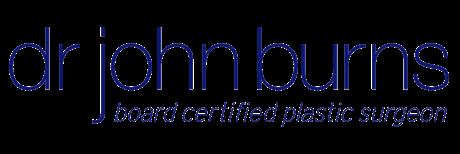
accredited operating facility and has hospital privileges at a nearby hospital. The surgeon should also have partnership with a board-certified anesthesiologist who will administer the anesthesia for your procedure.”
Breast augmentation, liposuction, tummy tucks, and mommy makeovers are the most common plastic surgery requests Dallas plastic surgeons receive. However, rhinoplasty, breast implant removal, arm liposuction, and face and neck lifts are becoming more popular as well. Here’s what you need to know about them.
MOMMY MAKEOVERS. According to Dr. Burns, mommy makeovers are unique to each patient. Some may want a breast lift and a tummy tuck, and others may want breast augmentation, a tummy tuck, and liposuction. “In general, a mommy makeover consists of procedures designed to restore the body after pregnancy, childbirth, and breastfeeding,” Dr. Burns says. “This is usually a combination of breast and body procedures. Appropriate candidates are patients
who are in good health without other health-related maladies and who have a good height/weight ratio or BMI less than 35—preferably less than 30. They should be non-smokers and have outcome expectations that are in line with results evidenced in their plastic surgeon’s portfolio.” Dr. Burns says it is safe for patients to have multiple procedures at once, provided the surgery time is less than six hours, the surgery is performed in a fully accredited facility with a boardcertified anesthesiologist, and if pre-labs show a normal blood count. Most of Dr. Burns’ mommy makeovers consist of a breast augmentation, breast lift, or both, as well as a tummy tuck and liposuction to remove excess fat and sculpt the waist and love handles. “Generally, patients return to activities of daily living one to two weeks after surgery,” he says. “The most common feedback from moms in my practice who’ve had a mommy makeover is that they wish they would have done it sooner. Many moms tell me that they have ‘mom guilt’ about having the procedure for a variety


of reasons—financial, time away from kids, etc., but once they have overcome this obstacle and have the procedure, they come back feeling better than ever about themselves as women.”
BREAST AUGMENTATION. Dr. White offers the latest advance in breast augmentation—the Optimized, Rapid Recovery Breast Augmentation (also known as The No Bruise Breast
Augmentation™) a detailed approach without a single bruise in over 95% of patients. He developed this seven-step program to optimize every step of the process while focusing on a rapid recovery without the stuck-on look. “Breast augmentation is always No. 1 on the list for most requested procedures,” Dr. White says.
By using specialized instruments and precise techniques to avoid bruising and minimize pain, patients enjoy a remarkably quick and easy recovery. Typically, they have no bruising at all and are only taking Tylenol for pain on the day after surgery. According to Dr. White, the two most important factors in breast augmentation involve how the pocket is made under the muscle for the implant and how the surgeon matches the implant to the patient’s body and their desired size. Precise pocket dissection is essential to allow for the best cleavage and minimize the chance of the implants becoming displaced after surgery due to over-dissection of the pocket. To achieve natural-appearing breasts requires careful attention when selecting which implants to use. This is best determined during surgery when tester implants are used to try out several implants to ensure that the best implant is selected to match the individual patient’s tissues and desired size. Sculpting of the breast tissue over the implant is also often indicated to create a natural result. Says Dr. White, “Since one of the most common reasons women seek revision breast augmentation is to change the size (usually bigger, sometimes smaller), wouldn’t it be best to ‘optimize’ the size the first time?”

Ashley
Angela


ARM LIPOSUCTION. Recently, Dr. White has seen an uptick in patients requesting his specialized MicroLipoSculpt™ technique for liposuction of all body areas, especially liposuction of the arms. Patients who are tired of jackets and shirts that no longer fit well in the arms are amazed by how much thinner their arms can be after MicroLipoSculpt™ Liposuction of the arms. Liposuction slims and reshapes specific areas of the body by removing excess fat deposits, improving body contours and proportion. Dr. White sculpts the upper arms with specially designed, custom-made, small cannulas for greater fat removal with a more natural look with smoother contours. A tumescent (super wet) technique is used to minimize blood loss and allow larger volumes of fat to be removed more safely. Recovery is faster with most patients returning to work after several days.
BREAST IMPLANT REMOVAL. While breast augmentation remains the No. 1 most requested plastic surgery procedure, some women are ready for a change and looking into the possibility of breast implant removal.

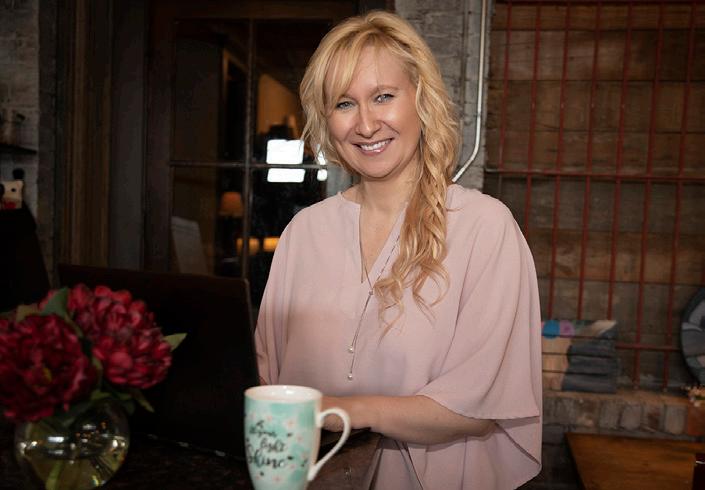
Elegant Precision™ Implant Removal is the process Dr. White developed to optimize each step of implant removal (explantation) and capsulectomy. Using precision surgery techniques allows him to carefully remove the implant and capsule, typically with minimal bruising allowing a faster, easier recovery. Implant removal without replacement of the implant or removal of the excess skin creates a ‘deflated’ appearance due to relative skin excess after implant removal. Ideally, a breast lift is done months later, once additional blood supply returns to the breast and nipple tissue. “Obviously, surgical treatment in the operating room is critically important,” Dr. White says. “Unfortunately, some fail to recognize the importance of comprehensive postop care for these patients. It is imperative to carefully manage the healing process with adequate compression and support as healing progresses and the skin shrinks over time. Most patients are surprised by how much the tissues eventually shrink, and some patients are so pleased with the results that they don’t feel a need for a breast lift.”
RHINOPLASTY WITH SEPTOPLASTY AND TURBINOPLASTY. Dr. White has also seen an increase in requests for rhinoplasty to re-shape the nose and septoplasty and turbinoplasty to improve breathing and allergies. Dr. White knows sculpting the nose is a game of millimeters, which requires precise techniques and a thorough understanding of the complicated anatomy. Careful attention should be taken to avoid over-resection causing a pinched, collapsed, or “done” look. Dr. White’s “Better Rendition of You”
Structure Rhinoplasty (also known as The Elegant Rhinoplasty™) is the culmination of his decades of experience performing nasal surgery as both an ENT doctor and plastic surgeon. He chooses to spend more time to optimize every aspect of your nose surgery, not only removing excess tissue but also reshaping your nose and restoring its structure for improved appearance with better breathing and less allergies.
TUMMY TUCK. Traditional tummy tuck techniques may result in an unnatural, operated look, especially in the upper abdomen and around the belly button or umbilicus. Dr. White developed the TummySculpt™ Tummy Tuck to create a sculpted abdomen, a more natural belly button, and typically a fine line scar well hidden beneath the bikini line. In addition to a beautiful belly button and a smaller waist, Dr. White’s TummySculpt™ also lifts the top and outer thighs and buttocks. Patients often tell him he should call it a “torso transformation” since it is so much more than just a tummy tuck. Dramatic results can be achieved by removing both the excess fat and skin and by tightening the abdominal muscles stretched by one or more pregnancies.
FACELIFT WITH NECKLIFT AND BROWLIFT WITH EYELID LIFT. Although patients are often focused on the jowls and neck, most patients will first benefit from rejuvenation of the upper face with a brow lift and upper and lower eyelid lift (blepharoplasty). “Since the eyes are the windows to the soul, erasing the tired, angry look from drooping brows and heavy eyelids can take years off your appearance in a single day,” Dr. White says. “No one wants a ‘spooked’ look with over-elevated brows, hollow eyes, or a wind-swept or pulled face. The goal in facelift surgery should be a natural, refreshed appearance with a defined neck and jawline with imperceptible scars without distortion of the earlobes or hairline.” This is why Dr. White developed his Dual Layer BiDirectional High SMAS Face and Neck Lift™ (aka The Elegant Precision™ Face Lift). By lifting the drooping face up, sculpting the neck, and re-draping and removing the excess loose skin without tension, natural results can be achieved. Narcotics are typically not needed and there is little, if any, bruising following the procedure.